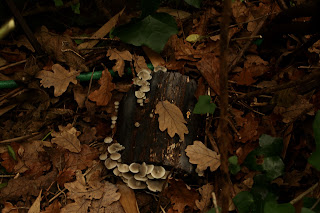Foliage fringed with frost is a familiar sight in winter... or at least it should be. I'm using a photograph taken back in January to illustrate this entry. The temperature in southern England is expected to reach as high as fourteen degrees celsius tonight. Fourteen degrees at night in late December!
We may be heading for the warmest temperatures ever recorded at this time of year. Admittedly it has been cold and damp recently but actually not that cold. There have been several air frosts but I haven't seen a hard ground frost as yet.
I mentioned in my last entry that I am in the process of pruning some large Fig trees. The general consensus is that Figs should be pruned in winter when the tree is dormant. During this period the sap is falling rather than rising. Fig trees can be bleed badly if pruned in summer (though I must admit I have done minor ad hoc pruning on these ones without ill effect in the summer months).
Clearly hard pruning is best done on them in winter and I wondered if I should wait until March or April as some sources suggest. The thinking is to prune after the danger of heavy frosts of passed. I see the logic in that but I think climate change is changing the way we have to garden. I would think there is probably more likely to be an early spring than a late blast of winter in which case many plants will be coming out of dormancy during March.
One of the first gardening books I bought back in the day was "The Garden Expert" by Dr. DG Hessayon; his "Expert" series of books on various aspects of horticulture were standard tomes for many a gardener from the fifties onwards. He advised that the frost season in the UK begins in October, sometimes earlier in the north. Well, I don't think I will open the curtains tomorrow and look out on a cold and frosty morning.


















































